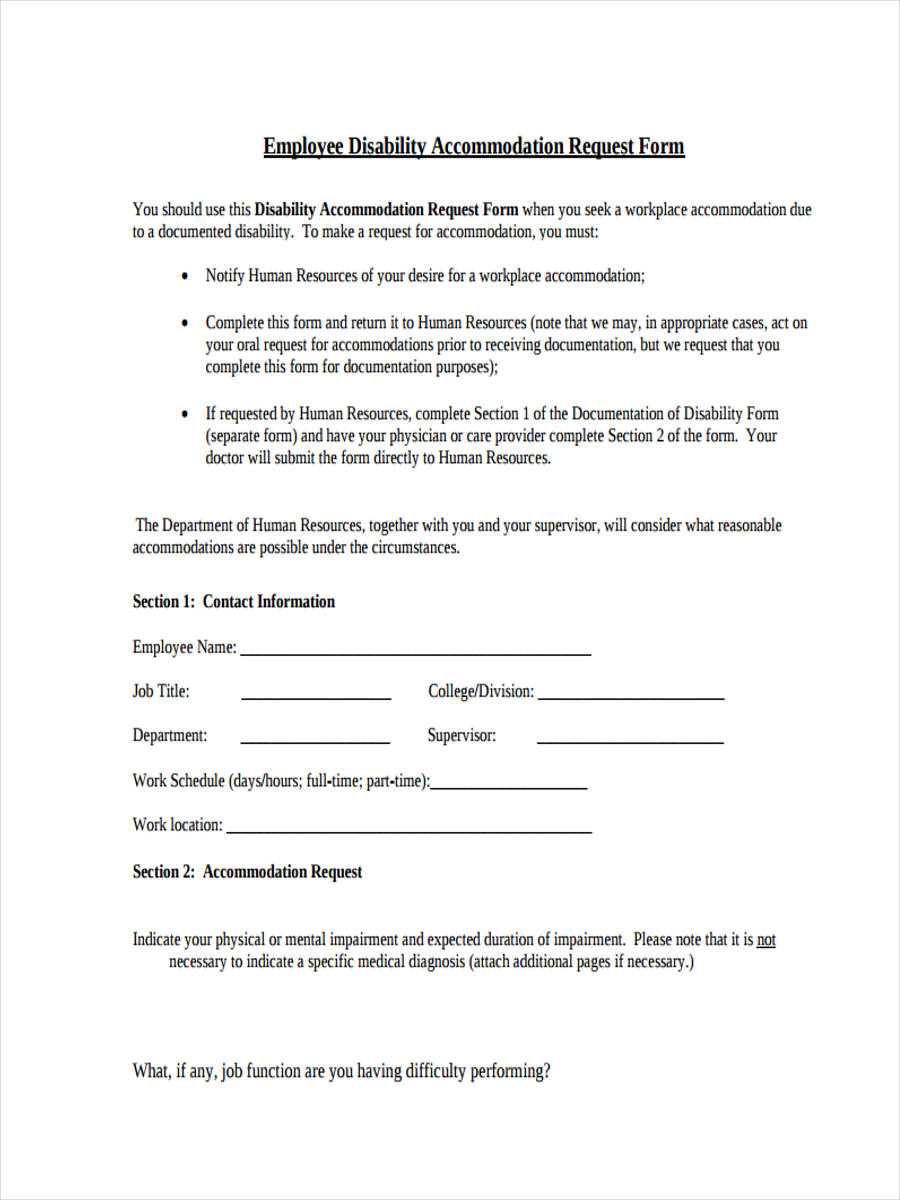



He does not link his need for the new chair with a medical condition. Although this is a request for a change at work, his statement is insufficient to put the employer on notice that he is requesting reasonable accommodation. This is a request for reasonable accommodation.Įxample D: An employee tells his supervisor that he would like a new chair because his present one is uncomfortable. The EEOC (Reasonable Accommodation and Undue Hardship (EEOC Guidance) provides the following examples:Įxample A: An employee tells her supervisor, "I'm having trouble getting to work at my scheduled starting time because of medical treatments I'm undergoing." This is a request for a reasonable accommodation.Įxample B: An employee tells his supervisor, "I need six weeks off to get treatment for a back problem." This is a request for a reasonable accommodation.Įxample C: A new employee, who uses a wheelchair, informs the employer that her wheelchair cannot fit under the desk in her office. Therefore, any time an employee indicates that he/she is having a problem and the problem is related to a medical condition, the employer should consider whether the employee is making a request for accommodation under the ADA. According to the EEOC, an individual may use "plain English" and need not mention the ADA or use the phrase "reasonable accommodation" when requesting an accommodation. The interactive process starts with an accommodation request from an employee with a disability so it is important for employers to be able to recognize a request. JAN offers the following additional information and tips for the interactive process, starting with the accommodation request: Step 1: Recognizing an Accommodation Request (4) Consider the preference of the individual to be accommodated and select and implement the accommodation that is most appropriate for both the employee and the employer. (3) In consultation with the individual to be accommodated, identify potential accommodations and assess the effectiveness each would have in enabling the individual to perform the essential functions of the position and (2) Consult with the individual with a disability to ascertain the precise job-related limitations imposed by the individual's disability and how those limitations could be overcome with a reasonable accommodation (1) Analyze the particular job involved and determine its purpose and essential functions As part of this process, the EEOC recommends that employers:

However, when an accommodation is not obvious, an appropriate accommodation is best determined through a flexible, interactive process. For example, if an employee who uses a wheelchair requests that his desk be placed on blocks to elevate the desktop above the arms of the wheelchair and the employer complies, an appropriate accommodation has been requested, identified, and provided without the need for a formal process. In many instances, the appropriate accommodation is obvious and therefore it is not necessary to go through a step-by-step process. To help determine effective accommodations, the Equal Employment Opportunity Commission (EEOC), recommends that employers use an “interactive process,” which simply means that employers and employees with disabilities who request accommodations work together to come up with accommodations.Īccording to the EEOC, the interactive process is not always required under the ADA. The Americans with Disabilities Act (ADA) requires covered employers to provide effective, reasonable accommodations for employees with disabilities.


 0 kommentar(er)
0 kommentar(er)
